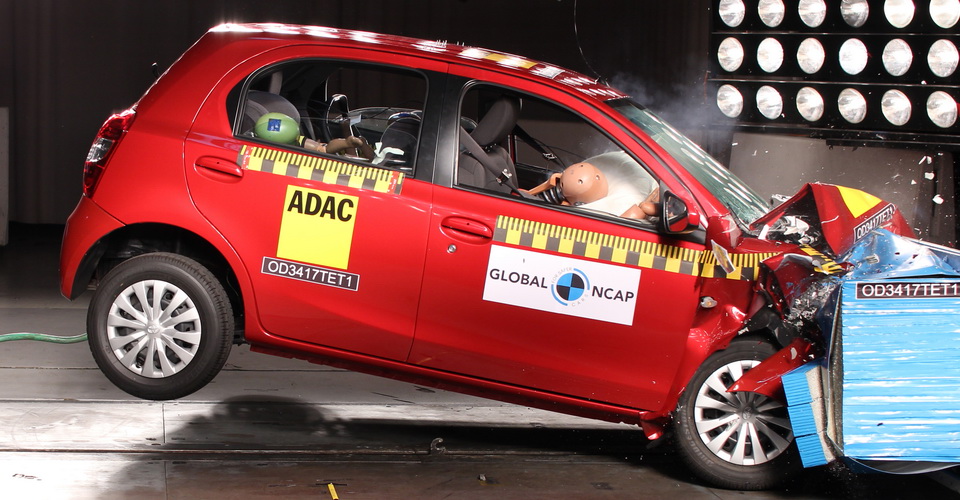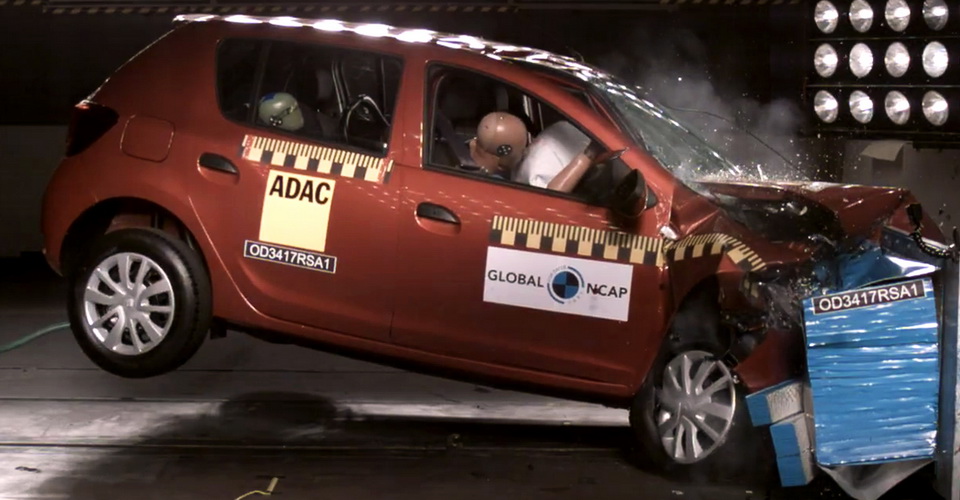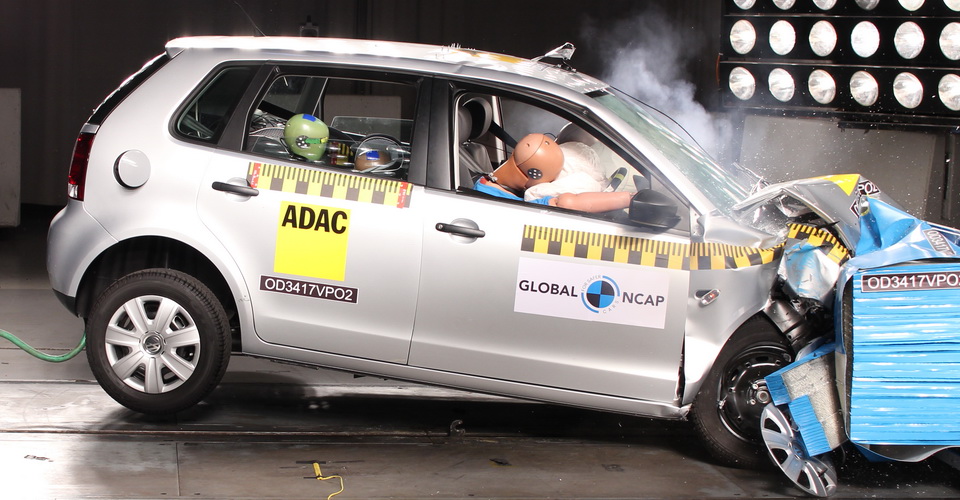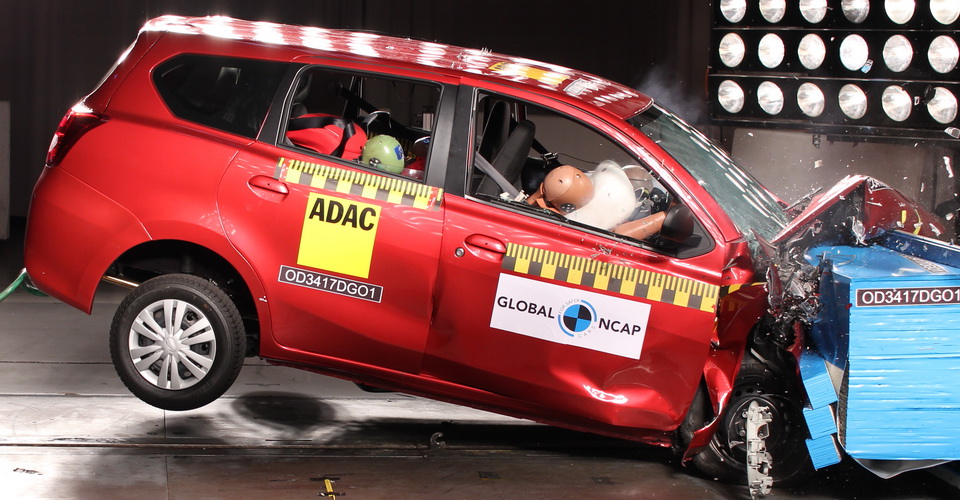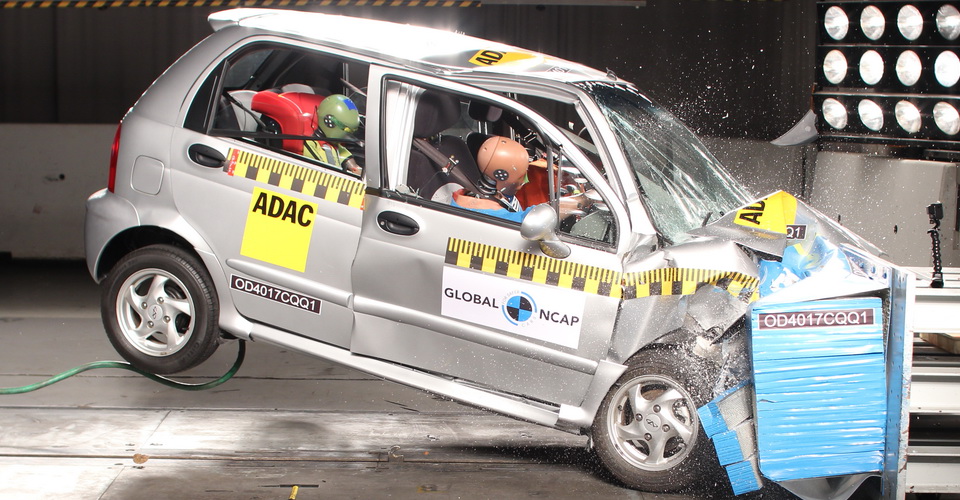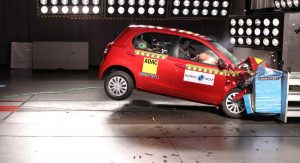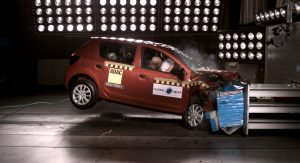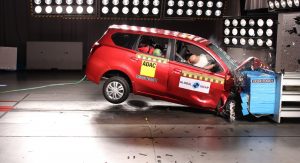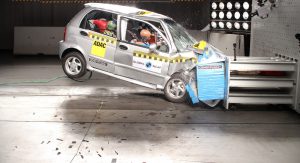Combining for 65% of all new cars sold in South Africa last year were the VW Polo Vivo, Datsun Go+, Toyota Etios, Renault Sandero and the Chery QQ3, a group of five extremely popular models.
Thanks to Global NCAP grabbing the entry-level version of each of these cars and testing their safety, we now know just how well they could protect occupants in the event of a crash.
While talking about the first ever crash-worthiness test for cars sold in Africa, Global NCAP chairman Lauchlan McIntosh says that such programs have led to safer cars being delivered in markets such as South America, India and the ASEAN region over the past five years.
“Working closely with our partners at the Automobile Association of South Africa and with the welcome support of the FIA Foundation and Bloomberg Philanthropies, our new campaign is an important first milestone on the road to Safer Cars for Africa.”
David Ward, secretary general of Global NCAP, added that “It is good to see a four star result in these first ever African crash test ratings. However, it’s extremely disappointing that there’s a zero star car. Such a poor result shows why it is so important for countries like South Africa to fully apply the UN’s crash test standards.”
Let’s run through these results and start with the only car here which achieved a four star rating for adult occupant protection.
Toyota Etios
The Etios’ structure was rated at stable during its frontal crash test, which was conducted at 64 km/h (39 mph). This model also came with seat belts with pretensioners for both front passengers, and achieved a three star rating for child occupant protection when Toyota-recommended child seats where used.
It’s worth noting that only the Etios and the Renault Sandero offer standard ISOFIX anchorages for the outboard rear positions and three-point seat belt for all passengers.
Renault Sandero
Like the Etios, the Sandero’s structure was also rated as “stable” during its frontal collision test, offering acceptable adult occupation protection. It wasn’t quite as good as the Toyota, but it did do better in the child occupant protection test where it achieved four stars – the best in the group.
Volkswagen Polo Vivo
The Polo Vivo delivered similar results to the Sandero as far as adult occupant protection is concerned. Also like the Sandero, it did not come with seat belt pretensioners. However, using child seats recommended by VW, the Polo Vivo only managed a three star rating for child protection.
Datsun GO+
Here’s where this list shifts from acceptable to downright scary. The Datsun GO+ achieved a one star rating for its poor driver occupant protection, and a two star rating for child occupant protection using child seats.
The dummy inside the car suffered chest damage (impact with the steering wheel, despite the airbag) during the frontal collision test, and the vehicle’s structure was rated unstable overall. There was also no airbag for the passenger.
Chery QQ3
Like Mr Ward said, the Chery QQ3’s performance was extremely disappointing. It achieved a zero star rating and its structure was deemed unstable as it collapsed during impact – resulting in injuries to the dummy’s head and chest.
Aside from not featuring any airbags, this car also didn’t have a manufacturer-recommended child seat, which explains why it received a zero star rating for child occupant protection as well.




